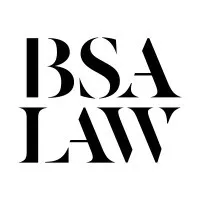- within Media, Telecoms, IT, Entertainment, Insolvency/Bankruptcy/Re-Structuring, Food, Drugs, Healthcare and Life Sciences topic(s)
Introduction
As the UAE continues to attract entrepreneurs and foreign investment we expect to see a steep rise of start-ups in the near future.
Crucial to a start-up are well organized and documented internal governance documents. Thus, beyond the start-up ensuring that they are incompliance with all applicable laws and regulations, and have in place their Memorandum of Association (MoA) and Article of Association (AoA), they should also strongly consider entering into a Shareholders' Agreement (SHA) at the time of incorporation.
What is a SHA?
The SHA is an agreement entered into amongst the shareholders which outlines how a company is to be operated, the rights and obligations afforded to the shareholders, and the relationship between the company and the shareholders. While the MoA and AoA set out the fundamental objectives, rights and responsibilities of directors and shareholders of the company, the SHA is solely focused on the shareholders' rights, obligations and powers.
Why use one?
1. Private document
The SHA is a private agreement amongst the shareholders is not a
matter of public record. .
2. Pre-empts contingencies
The SHA pre-empts certain circumstances and helps mitigate
potential disputes or provides frameworks and solutions which may
be utilised to efficiently deal with a dispute that may arise.
3. Ensures all shareholders are on the same
page
It is important all parties to a new venture align their mutual
goals and responsibilities. The SHA ensures that all shareholders
are on the same page in this respect.
4. Protects Founders' Interests
As the venture grows and expands, the management and ownership of
the company may also change. Thus, the SHA can help founders in
protecting their interests by structuring such changes and avoid
possible conflicts and.
5. Protects shareholders' interests
Ownership of shares is a crucial element of the SHA. Clauses on a
future issue of shares, shareholding restrictions, share transfers,
mandatory shareholders' vote on certain matters, etc. ensure
that the interests of both majority and minority shareholders are
taken into account, and their rights and obligations are clearly
laid down to give them effect.
6. Dispute resolution
The SHA typically also provides for a framework for dispute
resolution that regulates how a dispute between shareholders (and
the company) should be dealt with. It can serve to amicably resolve
disputes between them, thus preventing a company entangling itself
in an internal dispute.
Important clauses in an SHA
An ideal SHA would include the following important clauses:
1. Purpose and scope
Will serve to highlight the purpose of the SHA and defines its
scope of application.
2. Operation and management
This clause lays down matters such as appointment and removal of
directors, and appointment of other key managerial personnel such
as Managing Director, Chairman and other Officers, by the
shareholders and their voting rights in this regard.
3. Capital contribution
Under this clause, the parties stipulate the initial capital
contribution that would be made by each shareholder, and
contemplates the obligations of shareholders in case of additional
capital contribution requirements in the future.
4. Profit, Cost and Debt Sharing
The SHA also lays down the profit distribution policy of the
company, wherein the shareholders agree on how the finances of the
company shall be distributed as regards costs, debts, expansion,
assets and how net-profits are going to be shared amongst
shareholders.
5. Transfer of Shares
This clause lays down the terms of the transfer of shares by the
shareholders and sets out rights and obligations that the
shareholders shall have to observe in order to effect any such
transfer.
6. Reserved Matters
Reserved matters are specific matters, decisions or circumstances
which the shareholders have determined as important enough to be
dealt with exclusively by them (rather than by the directors of the
company).
7. Pre-Emptive Rights
A pre-emptive rights clause gives existing shareholders the right
to buy shares being issued by the company (before they are offered
to the general public) and/or, being sold by other existing
shareholders before they are permitted to transfer their shares to
a third party.
8. Deadlock Resolution
A deadlock event is where the directors or shareholders are unable
to come to an agreement over a decision. The deadlock clause
provides the procedure to be followed to resolve the deadlock.
9. Dispute Resolution
The dispute resolution clause lays down the procedure to be
followed to resolve any dispute that may ensue between parties to
the SHA.
Conclusion
Whilst not legally mandated, it is recommended to utilise an SHA to provide clarity and certainty over the rights, liabilities and responsibilities of the shareholders, to reduce the risk of any potential disputes that could hamper the success and longevity of the company.
The SHA is very flexible in that it will normally contain important clauses (as noted above) but can also be tailored to fit the unique circumstances of each start-up to ensure it is fit for purpose and addresses the primary needs and concerns of the shareholders. Further, it serves as an appropriate instrument to address matters that are more intrinsic to the management of the company.
It must be noted that an SHA cannot override the AoA, which is the governing and binding document of the company. Thus, while drafting an SHA, companies must ensure that the SHA is aligned with the AoA's terms, so that there is no dispute over any conflicting terms in the two documents.
The content of this article is intended to provide a general guide to the subject matter. Specialist advice should be sought about your specific circumstances.



